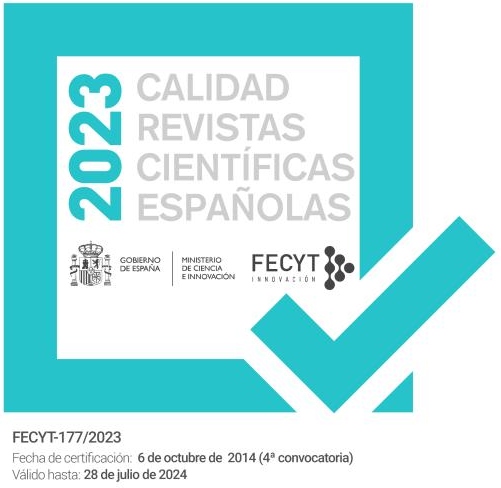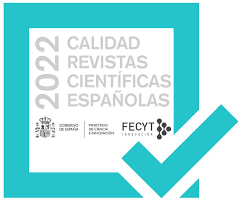Ethical code
The Revista Crítica de Derecho Inmobiliario, founded in 1925 and published by the Colegio de Registradores de la Propiedad, Mercantiles y de Bienes Muebles, has sought since its inception to contribute to research in the field of private law. To this end, it has always been essential to ensure the quality of the articles and papers published, as well as to comply with certain standards of editorial ethics that allow it to become an essential reference for the scientific community.
The principles that currently inspire the Journal are based on the Cope Guide of Good Practices for Publication Editors (https://publicationethics.org/resources/guidelines). The ultimate goal is to maintain irreproachable ethical behavior throughout the entire process, from the moment an author requests the publication of his or her work until the reader accesses its content. Likewise, it is essential to comply with the principles of transparency currently required by the various editorial rating agencies.
A) Rules on ownership of the Journal and its governing bodies:
On the website of the Journal it is clearly stated that the editor is the Association of Registrars of Property, Mercantile and Movable Property. Likewise, an appendix with the Regulatory Rules for the Organization of the Journal (link) is included, where the competencies of the different governing bodies are defined.
B) Rules that guarantee respect for the principle of equality:
The Journal guarantees that in the selection process of the texts to be published, only the intellectual content of the works will be examined, and under no circumstances will the sex, race, nationality, religious beliefs or political thought of the authors be taken into account.
Likewise, strict respect will be maintained for the principle of gender equality and non-discrimination on the basis of sex, race, religious beliefs or political thought in the formation of the Journal's governing bodies, striving to move towards a progressive parity between men and women in the same.
C) Transparency standards in the work evaluation process:
The process of selection of papers for publication in the Journal is clearly defined in a protocol that is published on the web page (link) for the knowledge of authors and subscribers. This protocol is based on the following principles:
- It is a completely electronic procedure in which all communications with the author will be made through the web.
- The Journal has an Evaluation Committee composed of external reviewers who will be in charge of evaluating the papers whose publication will be decided by the Editorial Committee.
- The process will guarantee confidentiality at all times, and the content of the work submitted for evaluation will not be disclosed to anyone outside the review process.
- The evaluation of the papers must be based on the impartiality of the reviewers and the Executive Committee. The reviewers will carry out their work without knowing the authorship data of the work. Notwithstanding the foregoing, if by any means they come to know the identity of the author, they must refrain from carrying out the evaluation. The members of the Executive Committee must abstain from participating in the vote on the admission to publication of a work with whose author there is any conflict of interest. A conflict of interest shall be understood to exist when there is a relationship of kinship up to the fourth degree by blood or affinity, marital or similar relationship, friendship or manifest enmity, subordination or contractual relationship.
- Reviewers who consider that the work to be analyzed does not belong to their own field of expertise, or when they foresee that they will not be able to meet the deadlines set forth in the protocol, should also abstain from the evaluation.
- The review system consists of a double-blind peer review procedure. Peer review is defined as obtaining advice on individual manuscripts from peer reviewers who are not part of the journal's editorial staff. Because it is double-blind, neither the author nor the reviewers can know the identity of the reviewers, nor the reviewers can know the identity of the author.
- The evaluation of the works will be carried out in compliance with the deadlines set forth in the protocol published on the web site.
- Papers that do not comply with the rules of publication that appear on the web site will not be accepted for evaluation.
- Evaluators must act in a purely objective manner, following the evaluation criteria set out in the protocol published on the website. They must clearly state their judgment on the work, based on objective arguments and not on mere personal opinions.
D) Standards that guarantee the originality of published works:
- The first of the requirements that the protocol published on the Journal's website establishes for the admission of papers for publication is their originality.
- The Secretariat of the Journal, the external evaluators and the Executive Committee will carry out an exhaustive examination of each paper to confirm that it is an original publication and that it does not contain plagiarism. The Compilatio software will be used for this purpose.
- Authors should submit papers that have not appeared in whole or in part in any other journal or publication. Neither should they submit papers that are under consideration or have been accepted for publication elsewhere, even if publication has not actually taken place. In addition, they should not publish or request publication of the submitted work in any other journal.
- In the submission form that is available on the web site there will be a specific clause whereby the author will ensure that the manuscript has not been published or requested for publication elsewhere, as well as the commitment not to submit it to any other publication until a decision is made on its acceptance in the Journal (REVIEW WEBSITE).
- The author of a publication is considered to be anyone who has made a significant contribution to the conception, structure or approach of the article or paper. If there are several authors, they must ensure when submitting the paper that all of them have given their agreement to the final version of the manuscript submitted for publication, as well as to the fact of being included as co-authors.
- Plagiarism is considered, in addition to appropriation in whole or in part of another's work, the attribution of another's idea without citing the author; not using quotation marks in a literal quotation; paraphrasing without citing the source; abusive paraphrasing even when citing the source; not correctly reporting the true source. Along with plagiarism, the fabrication, falsification or omission of data, repeated or redundant publication and authorship conflicts constitute scientific fraud.
- If plagiarism or any other misconduct is detected, the Executive Committee will follow the guidelines of the COPE Guide for these cases.
- The COPE Guidelines will also be followed in the event that the Journal becomes aware of any allegation of misconduct related to an article published in the Journal.
E) Copyright:
The author, in accordance with the General Conditions of the Collaboration Contract, will assign, by means of the contract signed with the Journal when submitting a paper for publication (link), all intellectual, industrial, image or any other type of property rights over the papers that are finally published in the Journal.
These General Conditions and the contract signed specify the economic rights that, if applicable, will accrue to the collaborator.
F) Access to the contents of the Journal:
The Journal is accessible to all subscribers, depending on the type of contract they sign. The different types of subscription contracts and their respective prices are published on the website, together with the text of the General Terms and Conditions of the Subscription Contract (link).
G) Sources of revenue for the Journal:
Fees paid by subscribers will be the main source of income. The Magazine contains no advertising.
H) Customer service:
The Journal, through its Secretariat, will attend to and resolve complaints, claims or suggestions presented by authors, subscribers or the general public on any aspect related to compliance with this Code of Best Practices.






